Natural diamonds or ones made in a lab? Leading jewellers’ war of words over the beloved gem – and whether THEY can tell the difference

Diamond enthusiasts have often gone head-to-head when it comes to buying lab-grown diamonds versus natural stones mined from the earth.
While most people struggle to tell the difference between the gems, their reputation in wider society is heavily debated.
FEMAIL spoke to Australian experts Zena K’dor from natural diamond retailer House of K’dor and Rebecca Klodinsky, co-founder of lab diamond jeweller The Prestwick Place.
And they have very different views.
Ms Klodinsky said there was no excuse to wear ‘bloody’ earth diamonds which ‘wreak havoc on the environment’ because ‘we know better’ in wake of the climate crisis.
But Ms K’dor claims ‘nothing can replace the real thing’ and that ‘earth diamonds matter to people who care about more than appearances’.
Lab diamonds in Australia are typically 70 per cent more affordable than mined diamonds – with celebrities including Taylor Swift, Jennifer Lopez, Hailey Bieber, and Meghan Markle choosing the more cost-effective and sustainable route.
But some people are completely turned off by them: ‘If my boyfriend proposed to me with a lab diamond I’d refuse,’ a woman said online in a thread about engagement rings. ‘It’s basically costume jewellery.’

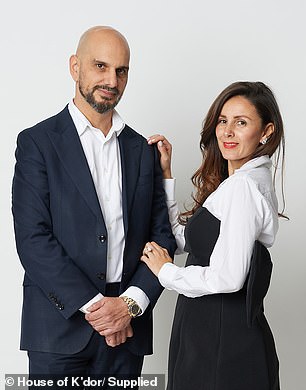
Australian experts Zena K’dor from natural diamond retailer House of K’dor and Rebecca Klodinsky, co-founder of lab diamond jeweller The Prestwick Place shared their opinions on diamonds
What is the biggest difference between natural diamonds and lab diamonds?
Ms K’dor claimed the stones were ‘completely different products’ because of their production method.
For synthetic gems, a diamond seed is exposed to extreme heat of over 1,000C and immense pressure, around 1.5million pounds per square inch.
A seed is created by artificially mimicking the natural processes that create a diamond using the high-pressure and high-temperature environment before enclosing it in pure carbon.
The carbon then melts and forms a diamond around the seed. Once it cools down, the diamond is fully formed.
Ms K’dor said: ‘Natural diamonds are made in the earth’s crust over millions of years developing unique characteristics such as inclusions, fluorescence, and shapes.
‘Lab grown are recreated on a mass scale in a laboratory to mimic the composition and appearance of natural diamonds, using technology and cubic press machinery which can vary greatly in quality.
‘There is only one machine that produces natural diamonds and that is mother nature, nothing else comes close.’
On the other hand, Ms Klodinsky had a more practical approach: ‘The main and only difference between the two is the price point.
‘Dirt diamonds have a price tag of nearly 60 per cent more than lab diamonds which is due to extraction costs, mining techniques, the rerouting of rivers, and environmental disturbances.’
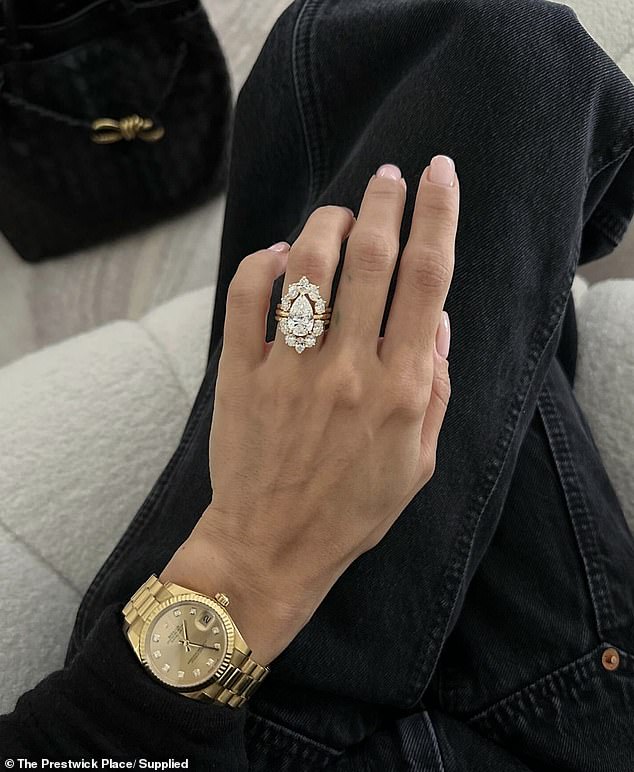
Lab diamonds in Australia are typically 70 per cent more affordable than mined diamonds
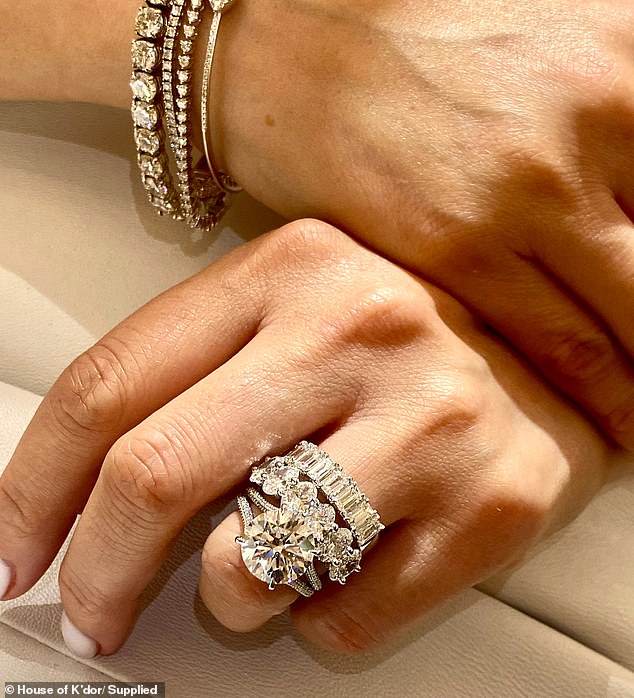
Ms K’dor said: ‘Natural diamonds are made in the earth’s crust over millions of years developing unique characteristics such as inclusions, fluorescence, and shapes’
Do experts prefer lab diamonds or mined diamonds?
For Ms Klodinsky, lab diamonds are the future. She claims there’s ‘no excuse’.
‘With technology making everything more accessible and consumers being more informed than ever, people are rising to this reality.
‘Sustainability is front and centre now, and there is no need – or excuse – to purchase a dirt diamond anymore.
‘The impact of extraction and mining is too bloody and damaging, and lab diamonds offer a far better alternative. While historically dirt diamonds may have been the bread and butter of many jewellers, there is little need or want for them in today’s society.’
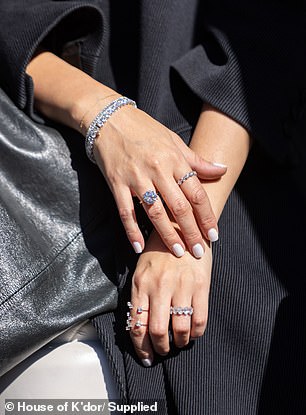
Ms K’dor is fascinated by the ‘romantic story’ behind the creation of natural diamonds
But Ms K’dor couldn’t disagree more.
‘I am personally captivated by the romantic story that comes with natural diamonds formed billions of years in mother nature’s lap, so pure, so real, so rare, nothing is more brilliant, beautiful, or dazzling than a natural diamond.
‘When looking into a diamond through a loupe you find yourself getting lost in their unique characteristics and their ability to reflect light, no two diamonds are the same.
‘At K’dor, we passionately believe in creating jewellery masterpieces with natural diamonds as there is nothing more meaningful to give or receive. Often passed from generation to generation as treasured heirlooms, there is an authentic emotional connection through the energy of the diamond.’
What are the misconceptions about lab diamonds?
Many people believe lab diamonds are easier to insure because they can be recreated – but that’s not the truth.
‘Just like a fingerprint, it is not possible to recreate a lab diamond,’ Ms Klondinsky said.
‘Lab diamonds are one-of-one, just as dirt diamonds are – they are not recreatable and insured just as a dirt diamond is.’
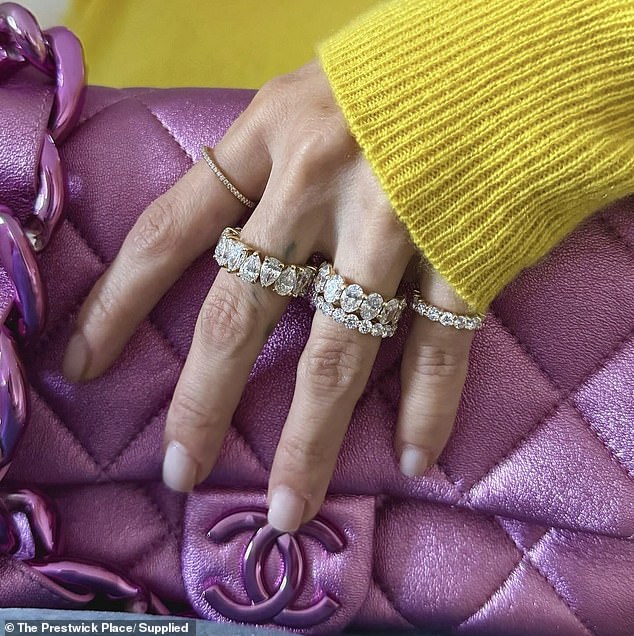
Natural diamonds are becoming increasingly controversial as consumers worry about ethical sourcing and damage to the environment during the extraction process
Do lab diamonds hold as much value in today’s market as natural diamonds?
When it comes to diamonds – especially for engagement rings – people should focus on personal preferences and not how much the gem’s resale value might be.
Ms Klondinsky said that while both kinds of diamonds hold the same value in today’s market – ‘neither should be viewed as a financial asset’.
However, Ms K’dor pointed out that mined diamonds have a limited supply which could inflate their value even further.
‘We have already seen a reduction in the supply of natural diamonds and as a result, good quality natural diamonds are commanding premium prices with less options to choose from.’
Asking an expert: Would you wear a lab diamond?
Ms K’dor is all-in for natural stones, and her company was founded on a ‘love of working with the world’s best natural diamonds’.
She said: ‘Whilst there will always be a desire to influence consumer attitudes, I believe it comes down to the individual value proposition.
‘If you are seeking a true, artisan product and looking for an authentic luxury piece that stands the test of time then you will care about quality and the origins of what you are buying.
‘However, if you are only concerned with the external look of something, then you may be drawn to products that mimics the real the thing and are mass produced. There is a reason that natural diamonds have retained their place for millennia.’
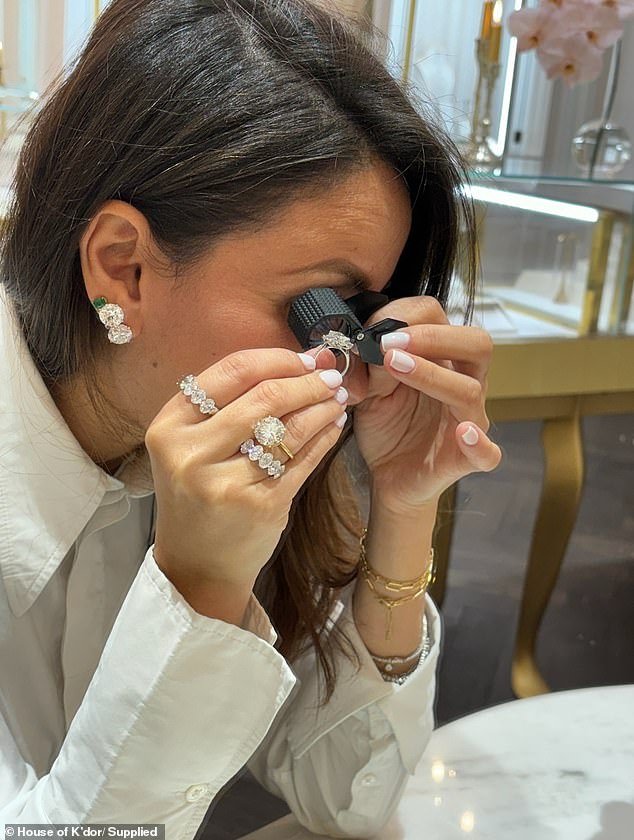
Ms K’dor is all-in for natural stones, and her company was founded on a ‘love of working with the world’s best natural diamonds’
Asking an expert: Would you wear a natural diamond?
Natural diamonds are becoming increasingly controversial as consumers worry about ethical sourcing and damage to the environment during the extraction process.
‘I would never wear a mined diamond,’ Ms Klondinsky said. ‘If you know better, you should do better. There is no longer room at the table for dirt diamonds.
‘Lab diamonds are undeniably the superior choice. They provide the same stunning beauty as dirt diamonds without the environmental harm or ethical issues.
‘Prominent figures like Jennifer Lopez, Lady Gaga, Justin Bieber, and Meghan Markle have embraced lab diamonds, signaling that luxury and sustainability can coexist.
‘Their choice reflects a growing consensus: lab diamonds are the future of fine jewellery.’
Shoppers fired off against each other online – with thousands entering the debate.
‘If I can’t have a natural diamond I’d go with a white sapphire or another gem,’ one said. ‘
Just because something looks the same, doesn’t mean it is. Lab diamonds are worth as much as glass.’
‘I worked hard for my money and I want something that holds value, that’s why I buy natural,’ another said.
‘Try selling a lab diamond – people will pay you pennies.’
‘People who buy natural diamonds have been brainwashed by an industry to be materialistic and overspend for no reason,’ another argued.
‘Choosing natural diamonds means undeniably having blood on my hands. This is just my perspective, and would make my skin crawl,’ a woman wrote.




